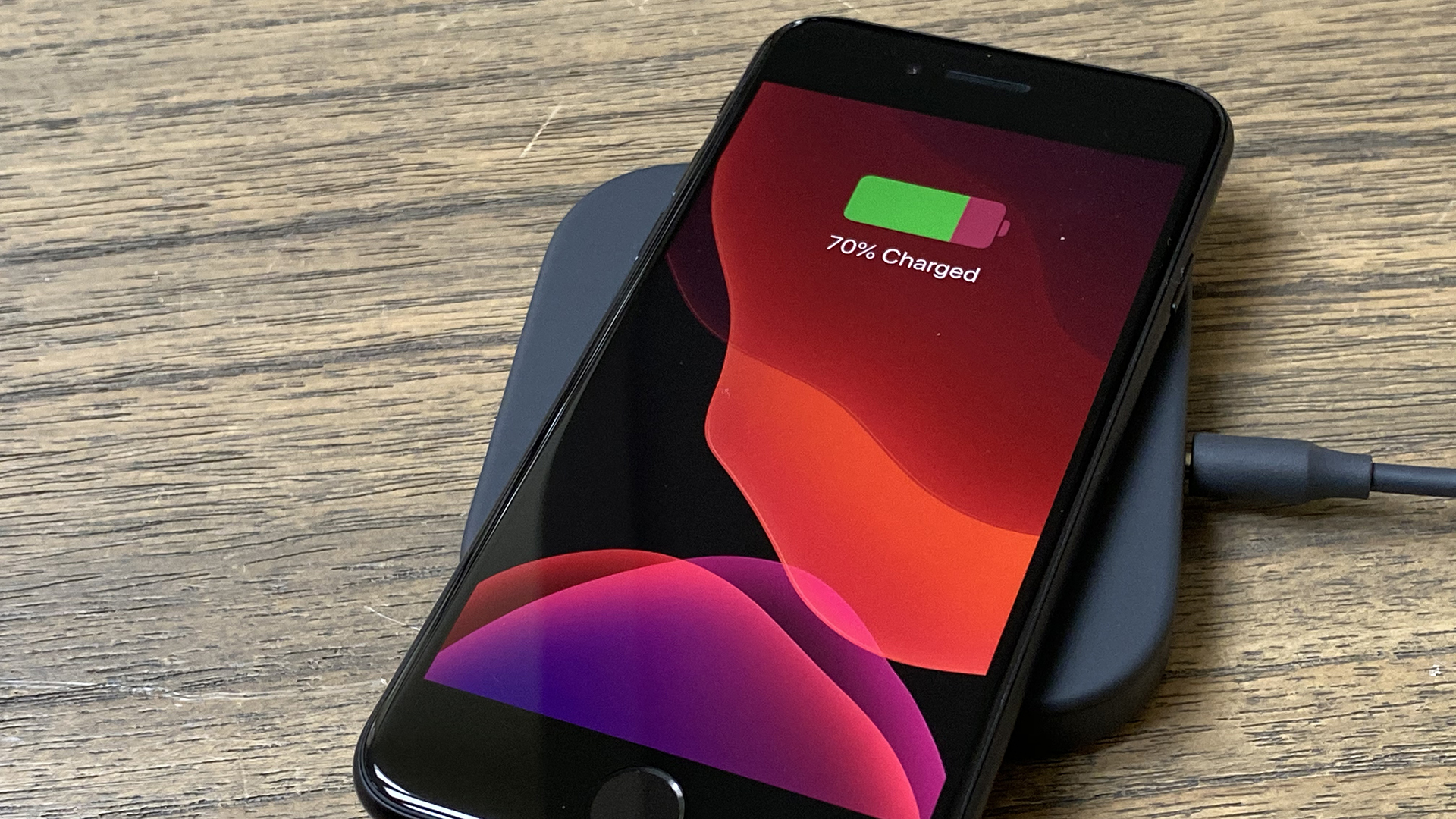iPhone SE 2020 battery life is a major letdown
The iPhone SE's battery life trails other phones by a significant margin based on our testing

Update: See our iPhone SE 2022 review for the latest version of Apple's most affordable iPhone.
The iPhone SE 2020 has a lot of things to recommend it for its $399 price, including a fast A13 Bionic processor, vibrant display and very good cameras. But battery life is not one of the phone's strengths.
In fact, based on our battery test, the iPhone SE's 1,821 mAh battery trails every modern iPhone by a significant margin — and its top Android phone competitor by nearly 3 hours. Here's how the new iPhone SE stacks up.
- Best phone battery life: These smartphones last the longest
- iPhone SE 2020 review: Should you buy it or skip it?
- Just in: iPhone SE Plus could be the phone of the year
iPhone SE 2020 battery life vs other phones
| Row 0 - Cell 0 | Battery life | Battery size |
| iPhone SE 2020 | 9:18 | 1,821 mAh |
| Samsung Galaxy S20* | 9:31` | 4,000 mAh |
| iPhone 11 Pro | 10:24 | 3,046 mAh |
| Galaxy S20 Plus* | 10:31 | 4,500 mAh |
| iPhone 11 | 11:16 | 3,110 mAh |
| iPhone 11 Pro Max | 11:54 | 3,969 mAh |
| Google Pixel 3a | 11:59 | 3,000 mAh |
| Galaxy S20 Plus* | 12:03 | 5,000 mAh |
| Moto G Power | 16:10 | 5,000 mAh |
* = Tested over 5G
On our battery test, we have each phone surf the web continuously over a cellular connection (4G or 5G) at 150 nits of screen brightness until the phone runs out of power. The phone loads a new site every 30 seconds. This test is not designed to mimic real-world use but it does allow us to compare relative endurance across multiple handsets.
Unfortunately, the iPhone SE did not impress on our testing, lasting an average of 9 hours and 18 minutes. We consider anything over 11 hours very good, and those handsets land on our best phone battery life list.
The new iPhone SE's battery life is nearly 2 hours behind the iPhone 11, which benefits from a larger 3,110 mAh but also powers a larger 6.1-inch display. The iPhone SE has a smaller 4.7-inch LCD.
Sign up to get the BEST of Tom's Guide direct to your inbox.
Get instant access to breaking news, the hottest reviews, great deals and helpful tips.
The iPhone 11 Pro, with its 5.8-inch display and 3,046 mAh battery, lasted 10:24 on our test and the 6.5-inch iPhone 11 Pro Max's 3,969 battery endured for an excellent 11:54.
So what about smartphones that are in the iPhone SE's price range? It doesn't look good there, either. The $399 Google Pixel 3a lasted a very impressive 11 hours and 59 minutes on our battery test, so you're getting 2.5 hours of extra juice out of this Android phone.
The $249 Moto G Power is in a class all its own. The whopping 5,000 mAh battery inside this phone lasted an epic 16 hours and 10 minutes, which is several hours longer than the iPhone SE. To be fair, the Moto G Power isn't nearly as powerful and is considerably bigger and heavier than the iPhone SE with its much larger 6.4-inch display.
The iPhone SE's battery life compares favorably to the regular Samsung Galaxy S20, which lasted just 9:31 on our tests. But that was over a 5G network, which we've found can have a meaningful impact on endurance. Still, the fact that the S20 has a 4,000 mAh battery compared to the iPhone SE's 1,821 mAh pack shows that battery capacity is just one part of the equation.
Overall, the iPhone SE's battery life is indeed a drawback compared to other iPhones and Android phones that compete directly with Apple's affordable phone. Anecdotally, the iPhone SE lasted significantly less time than my daily driver, which is the iPhone 11 Pro Max, but I found that the iPhone SE got me through a good chunk of the day on a charge.
Ultimately, the iPhone SE is an excellent value in terms of the features and the performance you get for the money. But if you want long endurance you should look elsewhere.
Mark Spoonauer is the global editor in chief of Tom's Guide and has covered technology for over 20 years. In addition to overseeing the direction of Tom's Guide, Mark specializes in covering all things mobile, having reviewed dozens of smartphones and other gadgets. He has spoken at key industry events and appears regularly on TV to discuss the latest trends, including Cheddar, Fox Business and other outlets. Mark was previously editor in chief of Laptop Mag, and his work has appeared in Wired, Popular Science and Inc. Follow him on Twitter at @mspoonauer.

